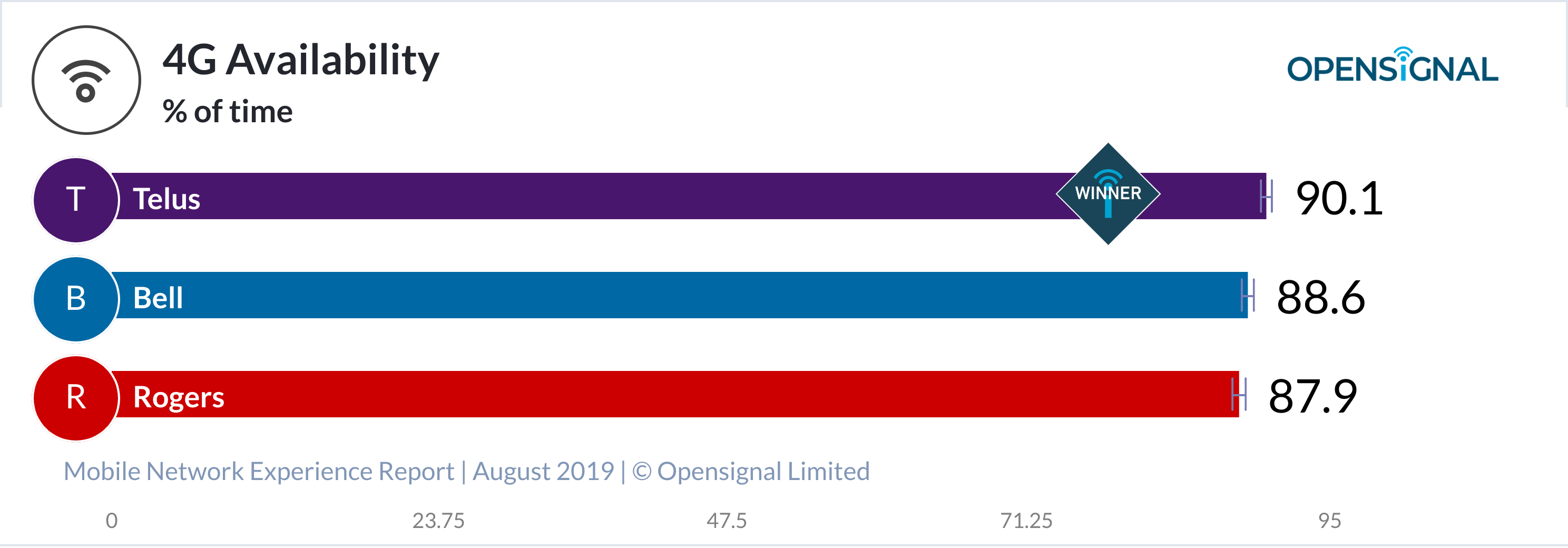As Canada’s 5G network inches closer to deployment, its major 4G networks are still improving, finds OpenSignal.
Through analyzing crowdsourced data collected from nearly 440,000 devices, OpenSignal’s Mobile Network Experience Report – which is conducted every six months to track Canada’s network growth – showed that 4G download speeds from major operators are still increasing.
Canada’s mobile download speeds ranked third in the world, trailing behind South Korea and Norway. Over the past six months, 4G speeds in Canada have been steadily increasing. Bell Canada and Telus Communications’ average download speeds saw an 8 Mbps, reaching over 51.9 Mbps and 57 Mbps respectively. Rogers Communications Inc. averaged downstream connection of 41.7 Mbps, representing a 5 Mpbs increase since the last report.
Unsurprisingly, excellent mobile download performances translated to good mobile video streaming experiences, which stands as the biggest traffic source. Load times and interruptions at high resolutions were all minimal across all three major networks.
Contrary to download speed, 4G availability only saw marginal increases. Still, Telus became the first carrier to cross 90 per cent availability. Bell and Rogers were close in tow at 88.6 per cent and 87.9 per cent respectively. It is important to note that availability and coverage are not synonymous; availability describes the amount of time 4G subscribers have access to a 4G signal, while coverage describes a network’s geographical distribution. Stagnation in 4G availability indicates that carriers are satisfied with the maturity of their networks.
As the next chapter in mobile communications, 5G will eventually evolve into the dominant network in Canada over the next few years. Granted, it must co-exist with 4G well into its deployment. The initial 5G launch will leverage existing 4G infrastructures in what’s known as non-standalone 5G networks. Discrete 5G networks with dedicated hardware are predicted to arrive in 2022.
Although it’s a year behind the U.S., Canada’s 5G network deployment is on track. The first round of 5G spectrum auctions concluded in March, dividing up the 600Mhz band across nine telecom companies and raising over $3.47 billion. Known as the low-band frequencies, the 600MHz spectrum is aimed at transmission over long distances rather than improving throughput. Data rate increases will be enabled with frequencies 3.5Ghz and up, which will be up for auction early next year.



